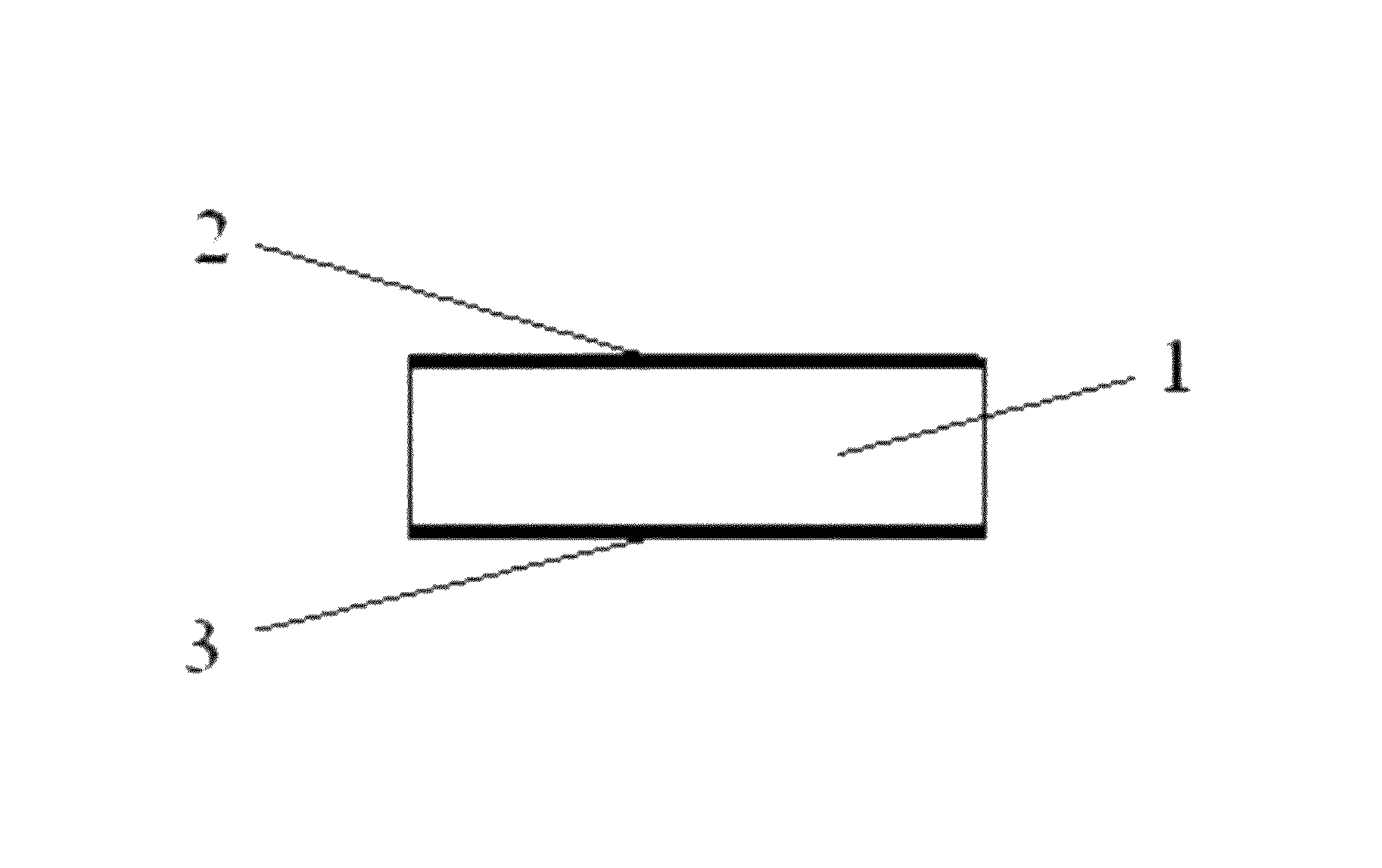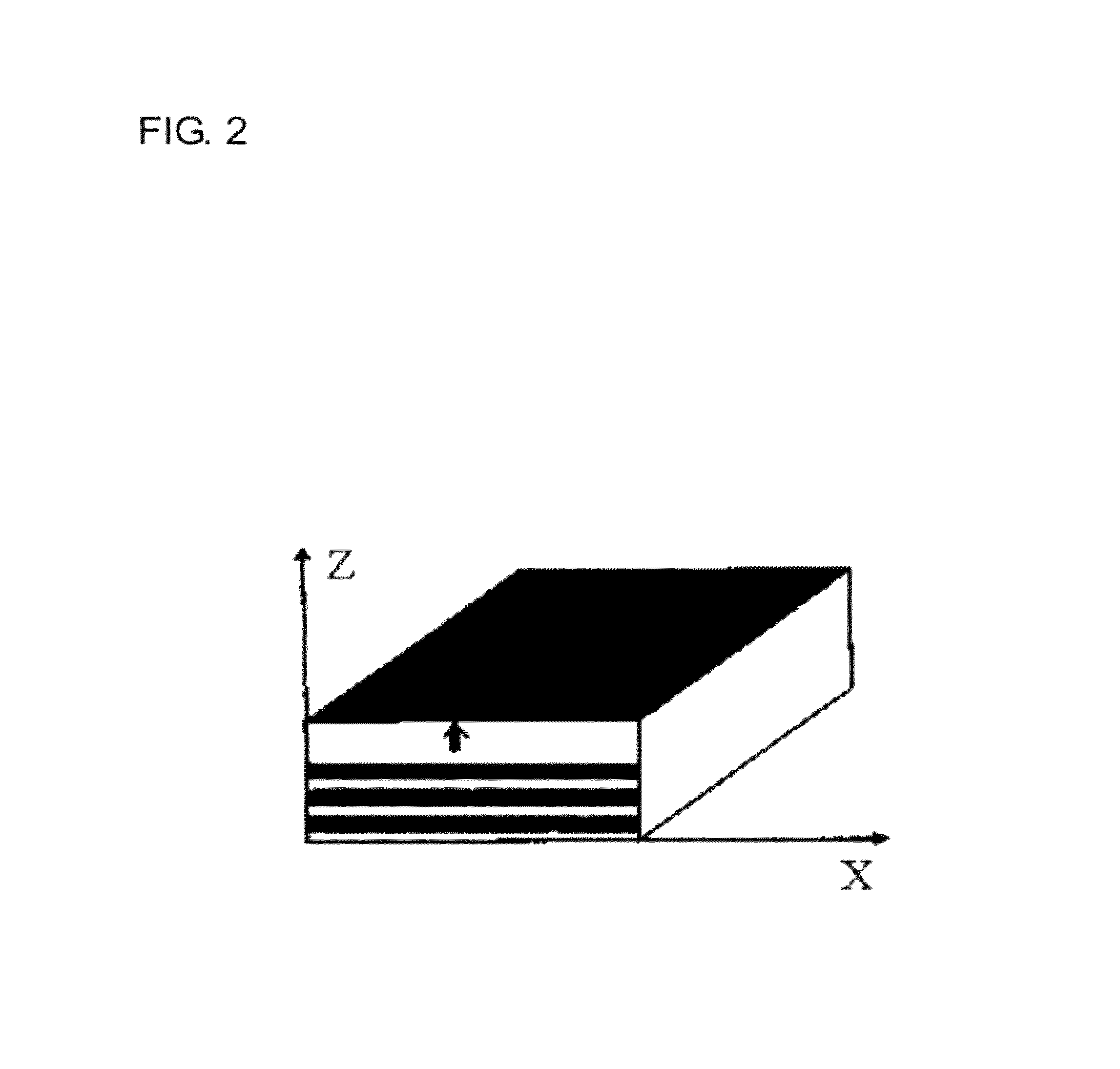Superlattice crystal resonator and its usage as superlattice crystal filter
a superlattice crystal and filter technology, applied in piezoelectric/electrostrictive/magnetostrictive devices, piezoelectric/electrostriction/magnetostriction machines, electrical apparatus, etc., can solve the problems of surface acoustic wave resonators with drawbacks, low power handling capacity, and difficult processing, etc., to achieve high selectiveness, high power handling capacity, and insufficient power handling capacity
- Summary
- Abstract
- Description
- Claims
- Application Information
AI Technical Summary
Benefits of technology
Problems solved by technology
Method used
Image
Examples
embodiment 1
One-Port Superlattice Crystal Resonator
[0032]As illustrated in FIG. 3, the superlattice crystal resonator of this embodiment comprises: a substrate 1 of a dielectric acoustic superlattice crystal material, wherein a metal electrode 2 and a metal electrode 3 are respectively plated on each side of the substrate 1, both the electrode 2 and the electrode 3 being continuous single electrode. The electrode 2 is used as an electrical input, and the electrode 3 is used as an electrical output. This structure is referred to as a one-port superlattice crystal resonator. Two vibration modes may be used: a vibration mode in which the sound propagation direction is perpendicular to the electric field direction as illustrated in FIG. 1 and a vibration mode in which the sound propagation direction is parallel to the electric field direction as illustrated in FIG. 2.
[0033]A superlattice crystal material with a vibration period of 7.8 μm was selected and cut into the substrate 1 with a size of 3.7 ...
embodiment 2
Two-Port Superlattice Crystal Resonator
[0036]As illustrated in FIG. 6, the superlattice crystal resonator of this embodiment comprises: a substrate 1 of a dielectric acoustic superlattice crystal material, wherein one side of the substrate 1 was plated with a metal electrode 2 and a metal electrode 2′, of a divided rectangle shape, and the other side of the substrate 1 was plated with a undivided, continuous single electrode 3. The electrode 2 was used as an electrical input, the electrode 2′ was used as an electrical output, and the electrode 3 is connected with common ground. This structure is referred to as two-port superlattice crystal resonator, which uses a vibration mode in which the sound propagation direction is perpendicular to the electrical field direction as illustrated in FIG. 1.
[0037]A superlattice crystal material with a vibration period of 7 μm was selected and cut into the substrate 1 with a size of 8 mm×1 mm×0.5 mm, and then the substrate 1 was plated with electro...
embodiment 3
Monolithic Superlattice Crystal Filter
[0039]The superlattice crystal filter of this embodiment was formed by a two-port superlattice crystal resonator as described in Embodiment 2 (see FIG. 6). In other words, a two-port superlattice crystal resonator as described in Embodiment 2 (see FIG. 6) can perform the function of a superlattice crystal filter. This structure is referred to as monolithic superlattice crystal filter
[0040]A superlattice crystal material with a vibration period of 7 μm was selected and is cut into a substrate with a size of 8 mm×3 mm×0.5 mm, and then the substrate was plated with electrodes in the mode of FIG. 1. The dimension of electrode 3 was 8 mm×0.5 mm; electrode 2 and electrode 2′ each were a rectangle of 2 mm×0.5 mm, having a separation of 1 mm between them and a distance of 1.5 mm from each end to the border of the substrate (see FIG. 9). A monolithic superlattice crystal filter having a center frequency of 741.4 MHz, bandwidth of 600 kHz, pass-band loss ...
PUM
 Login to View More
Login to View More Abstract
Description
Claims
Application Information
 Login to View More
Login to View More - R&D
- Intellectual Property
- Life Sciences
- Materials
- Tech Scout
- Unparalleled Data Quality
- Higher Quality Content
- 60% Fewer Hallucinations
Browse by: Latest US Patents, China's latest patents, Technical Efficacy Thesaurus, Application Domain, Technology Topic, Popular Technical Reports.
© 2025 PatSnap. All rights reserved.Legal|Privacy policy|Modern Slavery Act Transparency Statement|Sitemap|About US| Contact US: help@patsnap.com



